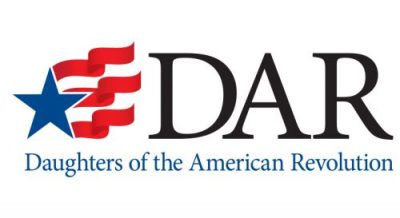Article published July 2, 2001

Mike Peters
Timeline: 1943-1946
 It must have been a shock for the German prisoners, one day fighting in the North African desert campaigns for Field Marshal Rommel, then, just a short time later, working the beet fields of northern Colorado. Those German prisoners-of-war were housed in a large POW camp between Greeley and Windsor from 1943 to 1946 when World War II ended. As many as 4,000 Germans and Austrians were brought to the camp from the North African campaign and the Normandy Invasion, where they were captured by the Allies. About half the prisoners stayed in the Greeley-Windsor POW camp, while others were shipped out to Camp Hale in the mountains, Camp Carson at Colorado Springs, Deadman Mountain lumber camp west of Fort Collins or to other areas where they were put to work for private or government agencies.
It must have been a shock for the German prisoners, one day fighting in the North African desert campaigns for Field Marshal Rommel, then, just a short time later, working the beet fields of northern Colorado. Those German prisoners-of-war were housed in a large POW camp between Greeley and Windsor from 1943 to 1946 when World War II ended. As many as 4,000 Germans and Austrians were brought to the camp from the North African campaign and the Normandy Invasion, where they were captured by the Allies. About half the prisoners stayed in the Greeley-Windsor POW camp, while others were shipped out to Camp Hale in the mountains, Camp Carson at Colorado Springs, Deadman Mountain lumber camp west of Fort Collins or to other areas where they were put to work for private or government agencies.
But in Weld County, the German POWs mostly worked the wheat, corn and beet fields for area farmers. Although the Greeley-Windsor camp was the largest, there were several other POW camps in the county:
- The Horace Mann School (now the site of the downtown Safeway store) housed Italian prisoners, until Italy surrendered to the Allies and began fighting against Germany. Those prisoners were shipped back to Italy in 1944.
- Nearly 200 prisoners were housed at the Great Western Sugar Company dormitory in Eaton.
- At the Ault High School gymnasium, 300 prisoners slept overnight and were taken to area farms during the days.
- Fort Lupton prisoners were housed at the Great Western Factory warehouse.
- The Johnstown Garage kept several prisoners, and others stayed in the GW Sugar Co.’s dormitory.
POW’s were also kept in various camps in Galeton, Keenesburg, Pierce and Kersey.
In addition, four miles north of Buckingham, now a nearly abandoned town between Briggsdale and New Raymer, the government operated a conscientious objector camp for three years during the war. Men who refused to serve in the military during the war were apparently taken to this camp. Little is known about it.
 With 4,000 prisoners and 200 staff members and guards, the POW camp was the second largest “city” in Weld County. Only Greeley, with a population of 16,000, was larger. The Greeley-Windsor camp consisted of 320 acres surrounded by tall, barbed-wire fences, patrolled by guards on horseback and police dogs. Guard towers were equipped with machine guns and search lights probed the grounds all night.
With 4,000 prisoners and 200 staff members and guards, the POW camp was the second largest “city” in Weld County. Only Greeley, with a population of 16,000, was larger. The Greeley-Windsor camp consisted of 320 acres surrounded by tall, barbed-wire fences, patrolled by guards on horseback and police dogs. Guard towers were equipped with machine guns and search lights probed the grounds all night.
Each morning, a truck would pick up the prisoners in their fatigue uniforms with “PW” written in large letters on the back and front, then deliver them to the farmer’s home or fields, where they would work a full day, then return to the camp that night. A lunch would be sent with them from the camp, but some farmer’s and their wives violated camp rules and would feed the prisoners who worked for them.
George Brug had a farm in the Severance area, and said POWs worked for him in the spring and fall for two years. “We’d drive the truck down to the camp in the mornings and pick them up about 7 o’clock. They’d work the day in the fields and I’d take them home about 4 in the afternoon. We paid them 80 cents a day in script, which could be used to buy things in the camp commissary.”
Brug spoke German, so he could communicate with the prisoners. “They were just like most of us … they wanted to be home with their families. Most were good workers, except for the real Nazis. But I found most of them didn’t support Hitler and didn’t want to be in the war in the first place. The prisoner help was a big help to the farmers, because most of the young men in this area were overseas, fighting. Brug said the prisoners were treated well and ate well, most of the time.”
“That first year, ” Brug said of the camps, “there was plenty of food for the prisoners. They would bring so much food to work with them that they’d feed leftovers to our horses. But then when our soldiers got into Germany and found out how the Germans were treating the Allied prisoners, the food here wasn’t as good. They didn’t have any leftovers that second year.”
Helen Stansbury was a secretary at the camp from 1944 until it closed in 1946, while her husband Floyd was overseas, fighting in Europe. She was in the Quartermaster Department, which issued clothing to the prisoners and soldiers stationed at the camp. She said the prisoners were well accepted by the people of Greeley: “The guards and army officers that were stationed at the camp were worried that the Greeley people were too friendly with the prisoners,” Stansbury said. “People needed help in the fields, and many of the prisoners went out to work for them. It was natural being nice to them.”
Stansbury said she remembers only two attempted escapes. In one, a prisoner was being transported from Greeley to Camp Hale when he jumped off the truck and ran away. They found him later, looking for New York. One prisoner once walked away from the Weld County work detail, but was recaptured when he stopped at a bar for a beer. In another apparent escape attempt, the guards found a hole had been cut in the fence around the camp. They placed guard dogs near the hole until it was fixed the next day, and nobody came out to the hole that night.
When the war ended, many of the prisoners were sent back to Germany, but a few stayed for the next harvest. The camp was eventually closed and the buildings sold at public auction. The city of Greeley purchased 49 of the buildings, 16,000 feet of wire fencing, a guard tower and spot light for the airport and one of the large latrines, which was moved to Island Grove Park and use as a public “comfort station” for several years. The officer’s club from the camp was purchased by the American Legion and is still the home of American Legion Post No. 109 in Windsor. Several barracks were purchased by Colorado State College and served as married student housing for more than 20 years. Some of the barracks are still standing at 23rd Avenue and 10th Street in Greeley, where they are now motel units.
Update: The two stone pillars stood side-by-side at the edge of U.S. 34, the only markers remaining to locate the old POW camp. The pillars once formed the entry gate to the camp. They will be reset west of their previous location in 2009 to accommodate the widening of US 34.
 Inscription:
Inscription:
 Inscription:
Inscription: Inscriptions:
Inscriptions: Greeley Tribune Article Published May 7, 2007
Greeley Tribune Article Published May 7, 2007 Inscription:
Inscription: Inscription:
Inscription: FORT ST. VRAIN
FORT ST. VRAIN #3 DITCH MARKER
#3 DITCH MARKER It must have been a shock for the German prisoners, one day fighting in the North African desert campaigns for Field Marshal Rommel, then, just a short time later, working the beet fields of northern Colorado. Those German prisoners-of-war were housed in a large POW camp between Greeley and Windsor from 1943 to 1946 when World War II ended. As many as 4,000 Germans and Austrians were brought to the camp from the North African campaign and the Normandy Invasion, where they were captured by the Allies. About half the prisoners stayed in the Greeley-Windsor POW camp, while others were shipped out to Camp Hale in the mountains, Camp Carson at Colorado Springs, Deadman Mountain lumber camp west of Fort Collins or to other areas where they were put to work for private or government agencies.
It must have been a shock for the German prisoners, one day fighting in the North African desert campaigns for Field Marshal Rommel, then, just a short time later, working the beet fields of northern Colorado. Those German prisoners-of-war were housed in a large POW camp between Greeley and Windsor from 1943 to 1946 when World War II ended. As many as 4,000 Germans and Austrians were brought to the camp from the North African campaign and the Normandy Invasion, where they were captured by the Allies. About half the prisoners stayed in the Greeley-Windsor POW camp, while others were shipped out to Camp Hale in the mountains, Camp Carson at Colorado Springs, Deadman Mountain lumber camp west of Fort Collins or to other areas where they were put to work for private or government agencies. With 4,000 prisoners and 200 staff members and guards, the POW camp was the second largest “city” in Weld County. Only Greeley, with a population of 16,000, was larger. The Greeley-Windsor camp consisted of 320 acres surrounded by tall, barbed-wire fences, patrolled by guards on horseback and police dogs. Guard towers were equipped with machine guns and search lights probed the grounds all night.
With 4,000 prisoners and 200 staff members and guards, the POW camp was the second largest “city” in Weld County. Only Greeley, with a population of 16,000, was larger. The Greeley-Windsor camp consisted of 320 acres surrounded by tall, barbed-wire fences, patrolled by guards on horseback and police dogs. Guard towers were equipped with machine guns and search lights probed the grounds all night.